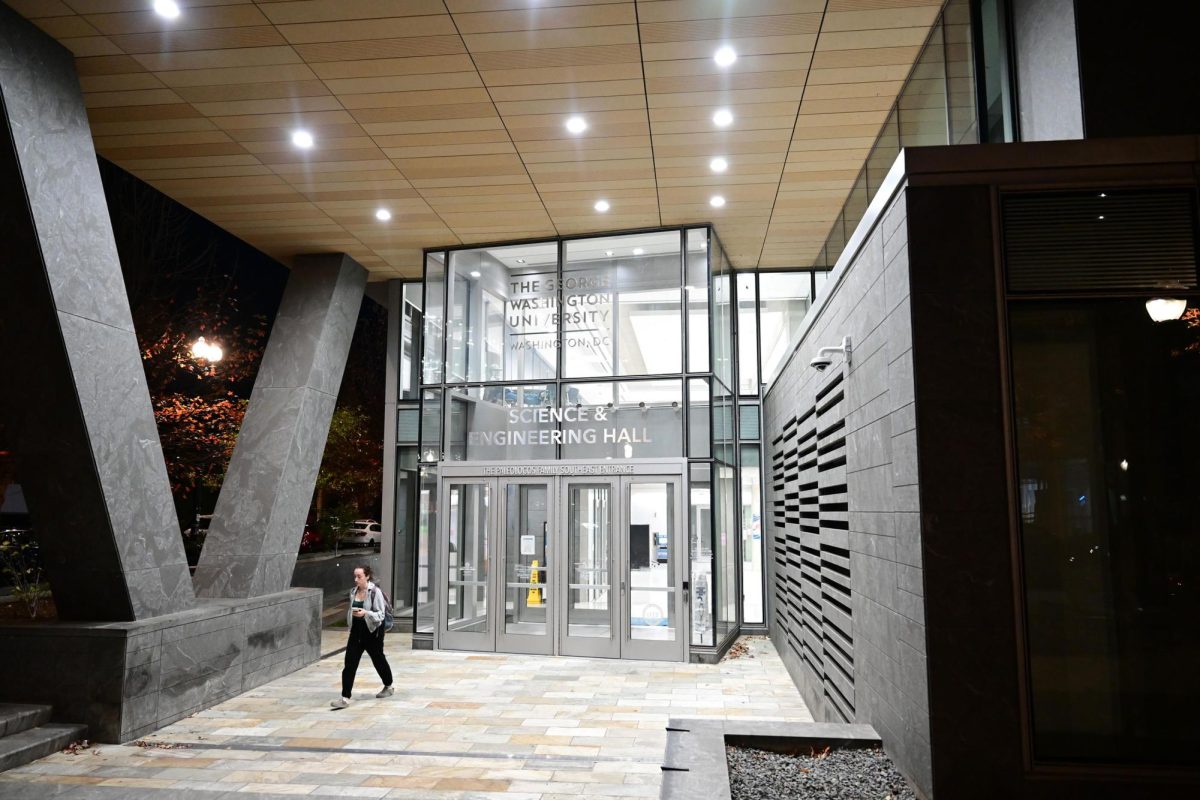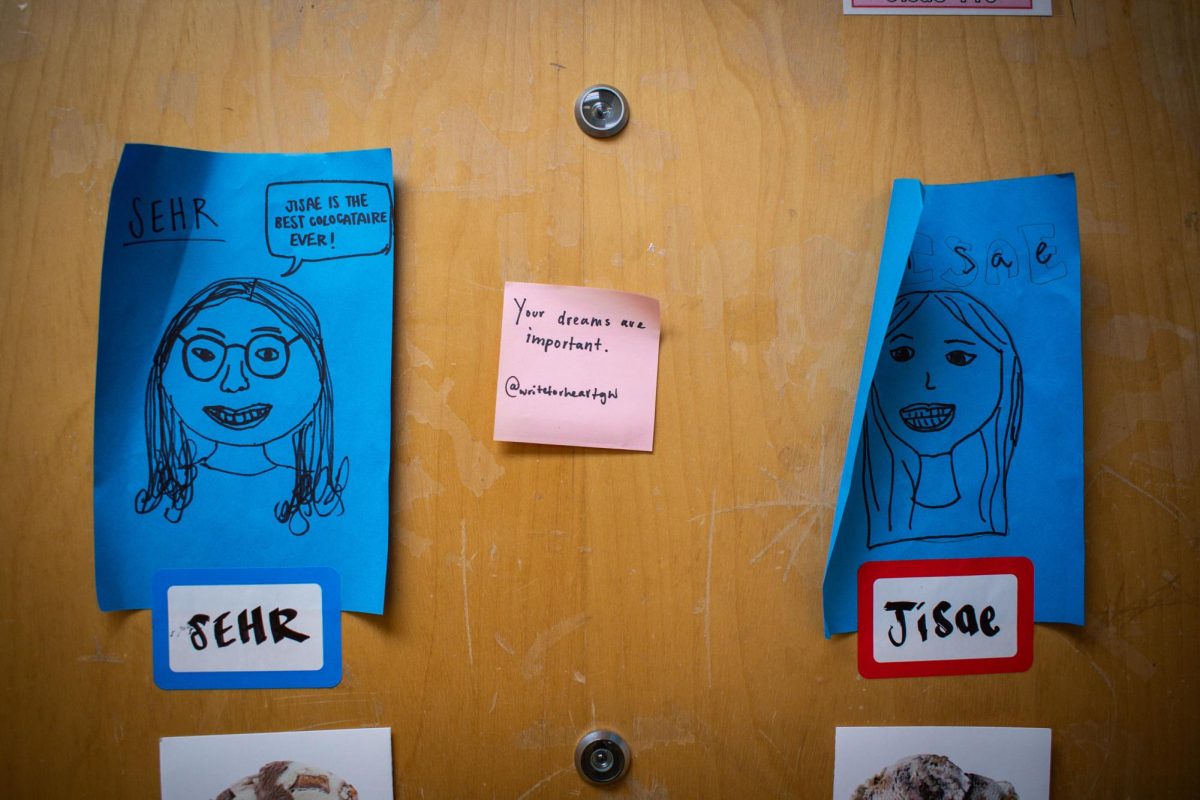The number of SafeRide passengers has surged this fall as more students seek out safer methods of travel across campus in light of recent safety concerns.
Officials said they have received 7,419 student requests for SafeRides so far this semester, a 16 percent increase from the 6,385 requests during the same time period in fall 2019, the last semester when the service was fully operational before the pandemic. In interviews, more than 15 students said they started regularly using SafeRide this academic year as a precautionary measure to move across campus, after a GW staff member suffered serious injuries from an assault with intent to commit sexual abuse in the G Street Garage earlier this month.
Destiny Jackson, the director of Transportation and Logistics, said officials currently operate nine SafeRide vehicles and employe 10 drivers. She said students should typically wait no more than five minutes for a ride, but the average wait time is currently about seven minutes.
“We need the community’s help in keeping the system efficient by immediately canceling rides that are no longer needed,” she said in an email. “Everyone is also encouraged to download the GW Guardian app as another safety resource when walking or ride sharing in the area.”
Anuka Upadhye, a junior majoring in international affairs, said she never used SafeRide her freshman year, but she’s used it about five times since returning to campus. She said she stopped walking alone after a man harassed her and a group of friends, commenting on their appearances while walking alongside them, and she had to file a police report against him.
“Just the fact that [SafeRide] exists, makes you feel safer,” she said. “Even if I don’t use it all the time, the fact that it’s an option that I have, a choice, that makes me feel safer.”
Upadhye said SafeRide is more accessible than Uber or Lyft because of its free cost, and she will generally call a ride instead of walking home alone.
“Uber and Lyft are so expensive, especially after dark,” Upadhye said. “You’re paying $30 to $40 to get somewhere.”
Grace Tobias, a junior double majoring in international affairs and women’s gender and sexuality studies, said she uses SafeRide about once every two weeks, so she doesn’t have to walk on campus after dark. She said she feels safer taking SafeRide than Lyft or Uber because drivers are hired through the University, meaning officials are aware of the drivers’ identities and can track drivers if needed.
“If I can take a SafeRide, I will,” she said. “I know that if something were to happen, the University has probably more tracking and can identify the driver, whatever the scenario is, whereas Uber and Lyft is completely separate. This is for students, so I assume more safety is involved.”
Officials added three off-campus stops to SafeRide in September – including 2400 M Apartments, The Flats at Dupont Circle and the Lincoln Memorial – after the SA Senate voted earlier in the month to support expanding the service.
Tobias said the expansion has made her feel secure on campus knowing that she has the option to call a SafeRide car if she needs it from one of the three off-campus locations. She said after crimes like the G Street assault and reports of barred individuals returning to campus, she is thankful for SafeRide.
“After the incidents happened, we felt very valid in using it whenever and wherever,” Tobias said. “Whereas before we were like, ‘Oh, maybe we don’t need this, someone else could benefit more.’ But then you’re like, no it was literally made for us, so use it no matter what.”
Sofia Campo, a junior majoring in psychology, said she never used SafeRide in previous years until the G Street assault. She said other recent threats to campus safety, like reports of stalking and multiple assaults by non-GW members, have greatly influenced her desire to travel with SafeRide instead of walking by herself.
“I’ve never used SafeRide before this year,” she said. “I started using it a couple weeks ago. I used to just walk, but then after everything that’s been going on, I started using SafeRide.”
She said the size of the program’s transportation zone on and off campus, space inside the vehicles and friendly drivers are major reasons that led to her regular use of the service. She said SafeRide travels off campus to her residence hall in the Aston and helps her avoid what used to be an “uneasy” walk by herself to her residence hall at night.
“The locations it goes to are super helpful,” she said. “The cars are always super big and the drivers are always really nice and always just very kind.”
Ini Efiom-Ekaha, a freshman majoring in public health, said she has used SafeRide three times this year and started using the service more because of recent criminal activity. She said she uses SafeRide over other ride-share services like Uber and Lyft because it is more accessible and affordable.
“Walking with a friend is always helpful, but sometimes you’re not with a friend, and you don’t want to disturb anybody,” she said. “So of course, taking that SafeRide is just the better thing.”
Genevieve Fleming, a freshman majoring in human services and social justice, said despite delays in pickup times, she was glad the option is available to students. SafeRide makes her feel more secure at night knowing she does not have to walk alone, she said.
“It’s made me feel more safe, especially at night, more safe just because walking home alone has always been a thing,” she said. “You don’t want to wake someone up if you’re leaving the library just to walk you back. So I do like that we have that available.”








